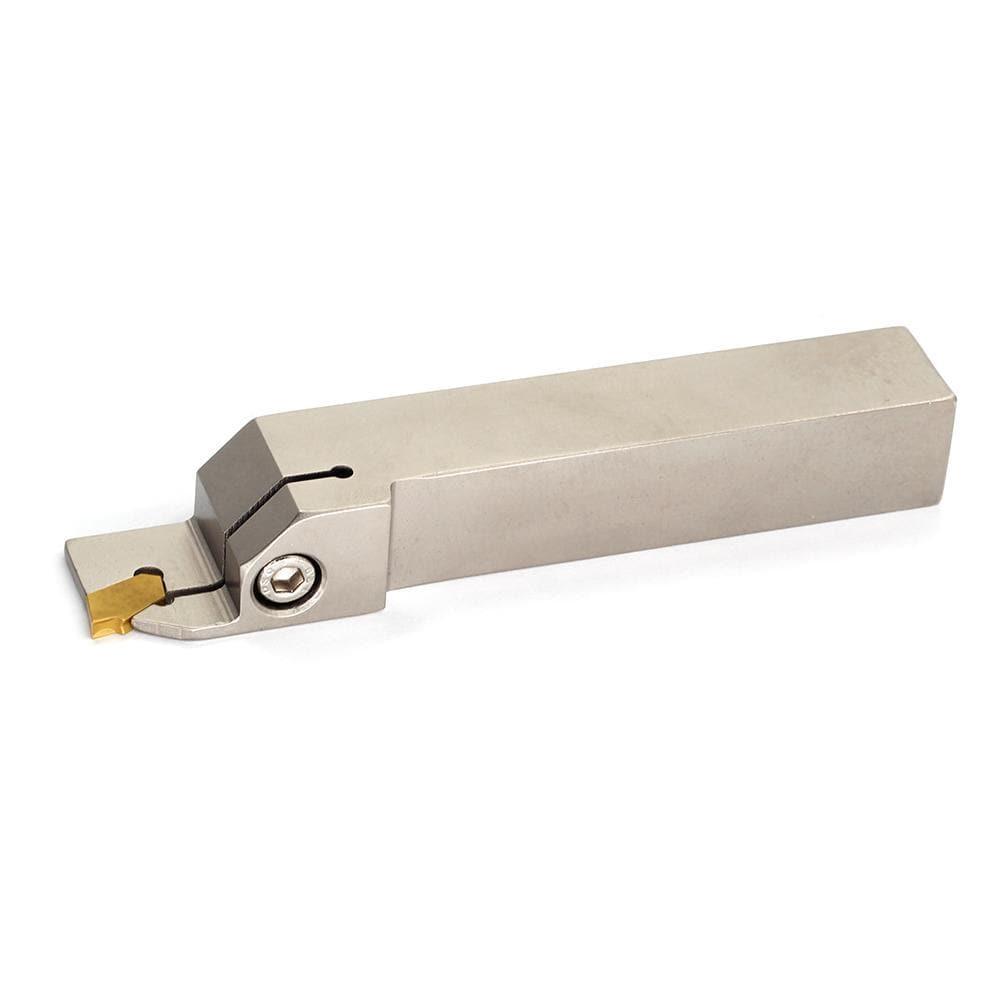

In lathe machining, parting tools are used to create a separation or cut-off between the workpiece and the remaining material. Parting tools are essential for operations like parting off, where a workpiece is separated from the main stock. There are several types of parting tools available, each with its own design and application. Here are some common types of lathe parting tools:
1. Straight Parting Tool: The straight parting tool is the most basic and commonly used type of parting tool. It features a straight cutting edge perpendicular to the workpiece, which creates a clean and straight cut. Straight parting tools are versatile and suitable for a wide range of materials and applications.
2. Narrow Parting Tool: As the name suggests, narrow parting tools have a narrower profile compared to the straight parting tool. They are used for parting off thin workpieces or when a narrower cut is desired. Narrow parting tools are especially useful when working with delicate or small-sized components.
3. Grooving Parting Tool: The grooving parting tool is designed with a groove or channel along its cutting edge. The groove helps in chip evacuation and facilitates smoother cutting. Grooving parting tools are particularly useful when working with materials that tend to produce long or stringy chips.

4. Insert-Based Parting Tool: Insert-based parting tools utilize inserts that can be replaced when worn out or damaged. These tools offer the advantage of quick and easy insert changes, reducing downtime during tool replacement. They are commonly used in high-production environments where efficiency and tool life are crucial.
5. Form Parting Tool: Form parting tools have a specialized cutting edge profile, allowing them to create grooves with specific shapes or contours. These tools are used for creating decorative or functional features in the workpiece, such as flutes, serrations, or custom profiles.
6. Blade-Type Parting Tool: Blade-type parting tools consist of a separate blade that is held in a toolholder or tool post. The blade can be adjusted or replaced based on the desired cutting parameters. Blade-type parting tools offer flexibility and ease of use, as the blade can be set at an angle or adjusted for different workpiece thicknesses.
7. Threading Parting Tool: Threading parting tools are specifically designed to create threads on cylindrical workpieces. They combine the functions of parting off and thread cutting into a single tool. Threading parting tools have a unique cutting geometry that allows for the creation of accurate and precise threads.
It's important to select the appropriate parting tool based on the specific application, material being machined, and desired cutting parameters. Factors such as workpiece size, material hardness, and available lathe power should be considered when choosing the right parting tool for a particular job. Additionally, proper tool setup, including tool height and alignment, is crucial to achieve optimal cutting performance and tool life.